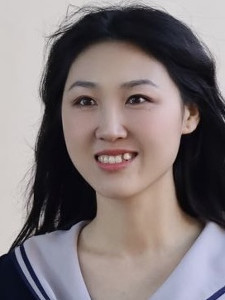OSE Dissertation Defense by Ms. Xiaobing Zhu on Phase Nanoscopy with Correlated Frequency Combs
Departmental News

Posted: April 27, 2025
Date: Tuesday, 04/29/2025
Time: 1:00 PM
Location: CHTM, Room 101
Committee:
Dr. Jean-Claude Diels, Committee Chair
Dr. Alejandro Aceves
Dr. Tara Drake
Dr. Terefe Habteyes
Abstract:
Central of this dissertation is to reach the quantum limit of physical quantity measurements based on phase sensing. Different from the traditional amplitude measurement with at best milliradian resolution, direct phase measurement (frequency measurement) are made by Intracavity Phase Interferometry (IPI) with correlated frequency combs to achieve nanoradian resolution. Mode matching that was required in traditional passive interferometers for amplitude measurement is no longer needed when performing the measurement in an active cavity: the Gaussian mode matches the curvatures of the end mirrors.
The frequency measurements involve the generation of the correlated frequency combs. First, two identical ultrashort pulses are generated through mode locking in the same cavity. The corresponding frequency combs overlap. Once a physical quantity to be measured is inserted into the laser cavity, a phase shift,  , is generated between the two pulses, which leads to frequency difference,
, is generated between the two pulses, which leads to frequency difference,  , between the correlated frequency combs. When the two pulses couple out of the cavity and overlap on a detector, a beat note signal at the frequency of
, between the correlated frequency combs. When the two pulses couple out of the cavity and overlap on a detector, a beat note signal at the frequency of  is monitored. The measurement of the beat note frequency measures the phase shift hence the physical quantity to be measured. Since the mechanical noise is not fast enough to make any change between the two correlated frequency combs, the resolution of frequency measurement with the combs is no longer limited by the linewidth.
is monitored. The measurement of the beat note frequency measures the phase shift hence the physical quantity to be measured. Since the mechanical noise is not fast enough to make any change between the two correlated frequency combs, the resolution of frequency measurement with the combs is no longer limited by the linewidth.
Frequency measurement has been demonstrated in ring laser cavities, such as magnetometer, Flowmeter, etc. In this dissertation, two ultrashort pulses of 230 fs are generated by synchronously pumping an OPO cavity at twice its round-trip rate. The use of parametric gain rather than the inversion gain of lasers eliminates the spontaneous emission noise. This is important since the noise of the pump laser is at best transferred to the OPO. Criteria are established for the pump laser (i) to be chirp free, (ii) to generate a frequency com with equally spaced teeth, (iii) to be a source of identical solitons, and {iv} to be a stable solution of a space-time Gaussian cavity.
According to the quantum limit obtained from phase-photon number uncertainty, the phase resolution is improved at the expense of a large number of photons. A resolution as small as 0.4 nanoradian is demonstrated for the measurement of an electric field with correlated frequency combs.
Biography:
Xiaobing received her B.S. in Communication Engineering from Nanyang Institute of Technology in China. Later, she obtained her M.E. in Optical Engineering from the Sichuan University in China, where she worked on characterization of thermal damage to infrared materials induced by laser pulses. She is a member of Dr. Jean-Claude Diels’s research group since 2019 pursuing a Ph.D. in the Optical Science and Engineering program at the University of New Mexico. Xiaobing has constructed and maintained a Ti:sapphire laser synchronously pumped OPO cavity, using it to perform phase nanoscopy with correlated frequency combs.
